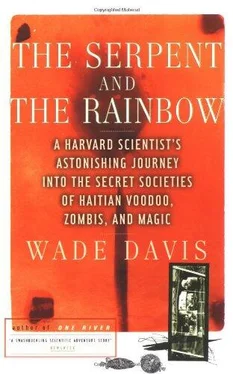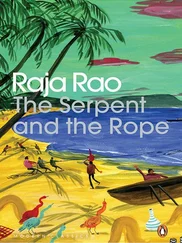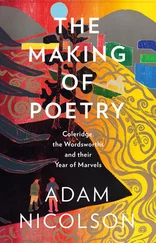Wade Davis - The Serpent and the Rainbow
Здесь есть возможность читать онлайн «Wade Davis - The Serpent and the Rainbow» весь текст электронной книги совершенно бесплатно (целиком полную версию без сокращений). В некоторых случаях можно слушать аудио, скачать через торрент в формате fb2 и присутствует краткое содержание. Год выпуска: 1985, Издательство: Simon & Schuster, Жанр: Старинная литература, на английском языке. Описание произведения, (предисловие) а так же отзывы посетителей доступны на портале библиотеки ЛибКат.
- Название:The Serpent and the Rainbow
- Автор:
- Издательство:Simon & Schuster
- Жанр:
- Год:1985
- ISBN:нет данных
- Рейтинг книги:5 / 5. Голосов: 1
-
Избранное:Добавить в избранное
- Отзывы:
-
Ваша оценка:
- 100
- 1
- 2
- 3
- 4
- 5
The Serpent and the Rainbow: краткое содержание, описание и аннотация
Предлагаем к чтению аннотацию, описание, краткое содержание или предисловие (зависит от того, что написал сам автор книги «The Serpent and the Rainbow»). Если вы не нашли необходимую информацию о книге — напишите в комментариях, мы постараемся отыскать её.
The Serpent and the Rainbow — читать онлайн бесплатно полную книгу (весь текст) целиком
Ниже представлен текст книги, разбитый по страницам. Система сохранения места последней прочитанной страницы, позволяет с удобством читать онлайн бесплатно книгу «The Serpent and the Rainbow», без необходимости каждый раз заново искать на чём Вы остановились. Поставьте закладку, и сможете в любой момент перейти на страницу, на которой закончили чтение.
Интервал:
Закладка:
Knowing very little about animal venoms, I reviewed the toxic and psychoactive plants I had become familiar with during my six-year association with the Botanical Museum. I thought of plants that could kill, and others that could lead one past the edge of consciousness. There was only one that even nominally met the criteria of the zombi poison. It was also the one plant that during all my investigations, and through all my travels, I had dared not imbibe—a hallucinogenic plant so dangerous that even Schultes, for all his stoic experimentation, had never sampled. It is a plant that has been called the drug of choice of poisoners, criminals, and black magicians throughout the world. Its name is datura , “the holy flower of the North Star.”
My tired thoughts broke into fragments that landed on a distant night, cold and clear as glass, in the high Andes of Peru. A brown dusty trail curved past agave swollen in bud and rose to an open veranda flanked on three sides by the adobe walls of the farmhouse. Against one wall sat the patient, alone and strangely solemn. He had been a prosperous fisherman a season ago, before the currents shifted and the warm tropical waters came south to strangle the sea life of the entire coast. As if conforming to some bitter law of physics, his personal life had mimicked the natural disorder: his child had taken ill, and then his wife fled with a lover. In the wake of these events the poor man disappeared from his village, only to reappear a month later, a simulacrum of death, naked and quite insane.
For two weeks the curandero had sought in vain to divine the source of such misfortune. With his inherent eye for the sacred he had laid out the power objects of his altar—stone crystals, jaguar teeth, murex shells, whale bones, and ancient huacas that rose methodically to touch an arc of colonial swords impaling the earth. In nocturnal ceremonies he and the patient had together inhaled a decoction of alcohol and tobacco from scallop shells carefully balanced beneath each nostril. Invoking the names of Atahualpa and all the ancient Peruvian kings, the spirits of the mountains and the holy herbs, they had imbibed achuma , the sacred cactus of the four winds. The curandero’s son had led the madman on mule on a slow passage high into the mountains to bathe in their spiritual source, the lakes of Las Huaringas. All to no avail. The visions had come, only weak and incomprehensible, and even the pilgrimage to the healing waters had done little to free the deranged man from his stubborn misery.
It was left for the curandero to work alone, to seek a solution in a stronger source, in some supernatural realm that might break a normal man. It was a solitary task, and leaving his patient sitting alone, he slipped away, walking with a stoop, sheltered by a worn poncho and an enormous hat that covered all of his face save his chin, which protruded like the toe of an old boot. He would engage a different set of visions—confusing, disorienting, unpleasant—and he would approach them not as a man of knowledge who might interpret and manipulate his spirit world, but rather as a supplicant who in just touching the realm of madness unleashed by the plant might attain revelation. It was a frightful prospect to relinquish all control, to lose all sense of time and space and memory. But he had no choice, and he approached his task with resignation, like the bearer of an incurable disease.
He retreated into a small stone hut, sealed by a broken door that turned his movements into vertical slices of light. I peered through these cracks at his shadowy figure moving in purposeful, increasingly smaller circles, the way a dog does before it beds down for the night. Once on the ground, he removed his hat, revealing a vaguely distorted face—distended blue-black lips and an elephantine nose that drooped precariously toward his mouth. The flesh had collapsed on his cheekbones, his eyes were lost in shadow. He sat quietly, accepting but not acknowledging the ministrations of his assistant, who carefully arranged a bed, a large basin of water, and a small enamel bowl of dark liquid. The assistant came out and took his place discreetly to one side of the door. He beckoned me to join him, and I moved close. We remained still, peering into the dark room, our breathing silenced by the light wind falling on the tin roof.
The curandero clasped the enamel bowl as a rural priest might hold a chalice, with his whole hands, firmly and without grace. Nodding first to the four corners of the hut, he drank slowly, deliberately, wincing slightly only once before draining the vessel. Then he sat profoundly still, with the calm that invariably follows such irrevocable acts.
The potion took effect quickly. Within half an hour he had sunk into a heavy stupor, his eyes fixed vacantly on the ground, his mouth sealed shut, his face suddenly bloated and red. His nostrils flared, and several minutes later his eyes began to roll, foam issued from his mouth, and his entire body shook with horrible convulsions. He plunged deeper and deeper into delirium, breathing spasmodically, kneading the earth with his long bony fingers like a cat exploring for fissures that might release him from his madness. Agonizing screams sliced into the night. He attempted to stand, only to fall and lie flat on the ground, thrashing the air with his arms. Suddenly he lunged for the basin of water, like a man whose skin is aflame or whose throat is parched. Then with a final anguished spasm, he collapsed and lay still.
This was cimora , the tree of the evil eagle, the closest botanical relative of datura.
The pale lavender light of dawn shone through the opaque membrane of the train window, a mirage of life, and finally, the slow scuffle of feet in South Station led me out into the morning light and onto the streets of Boston.
The city was just coming awake, and I felt far too agitated to sleep. I got to the Botanical Museum by the time it opened and had to wade through a horde of schoolchildren being dragged by a schoolmaster to the exhibits before I could climb the iron staircase and finally reach the private library on the upper floor.
The air was musty, the usual reassuring scent. From behind the oak cabinet that held the ancient folios and the original editions of Linnaeus, I extracted some leather-bound monographs, seeking impatiently that first clue that might solidify my intuitions. I found it in an old brown-paged catalog written some forty years ago. Datura did grow in Haiti, three species, all of them introduced from the Old World. I scanned the list of common names, names that frequently reflect popular applications of the plant. One of the species was Datura stramonium . To the Haitians this was concombre zombi— the zombi’s cucumber! With a quiet sense of satisfaction I retreated to my favorite chair, and within minutes fell fast asleep.
•
A key touched the outer lock. Professor Schultes walked in, his arm cradling several volumes.
“Don’t you usually sleep in your office?” he asked wryly. We exchanged pleasantries, and then I briefed him on the zombi investigation.
Schultes shared my instincts for datura, and together we spent the morning building the case.
There was no question that species of datura are topically active. Sorcerers among the Yaqui Indians of northern Mexico anoint their genitals, legs, and feet with a salve based on crushed datura leaves and thus experience the sensation of flight. Schultes felt that quite possibly the Yaqui had acquired this practice from the Spaniards, for throughout medieval Europe witches commonly rubbed their bodies with hallucinogenic ointments made from belladonna, mandrake, and henbane, all relatives of datura. In fact, much of the behavior associated with the witches is as readily attributable to these drugs as to any spiritual communion with the diabolic. A particularly efficient means of self-administering the drug for women is through the moist tissues of the vagina; the witch’s broomstick or staff was considered a most effective applicator. (Our own popular image of the haggard woman on a broomstick comes from the medieval belief that witches rode their staffs each midnight to the sabbat, the orgiastic assembly of demons and sorcerers. In fact, it now appears that their journey was not through space, but across the hallucinatory landscape of their minds.)
Читать дальшеИнтервал:
Закладка:
Похожие книги на «The Serpent and the Rainbow»
Представляем Вашему вниманию похожие книги на «The Serpent and the Rainbow» списком для выбора. Мы отобрали схожую по названию и смыслу литературу в надежде предоставить читателям больше вариантов отыскать новые, интересные, ещё непрочитанные произведения.
Обсуждение, отзывы о книге «The Serpent and the Rainbow» и просто собственные мнения читателей. Оставьте ваши комментарии, напишите, что Вы думаете о произведении, его смысле или главных героях. Укажите что конкретно понравилось, а что нет, и почему Вы так считаете.












